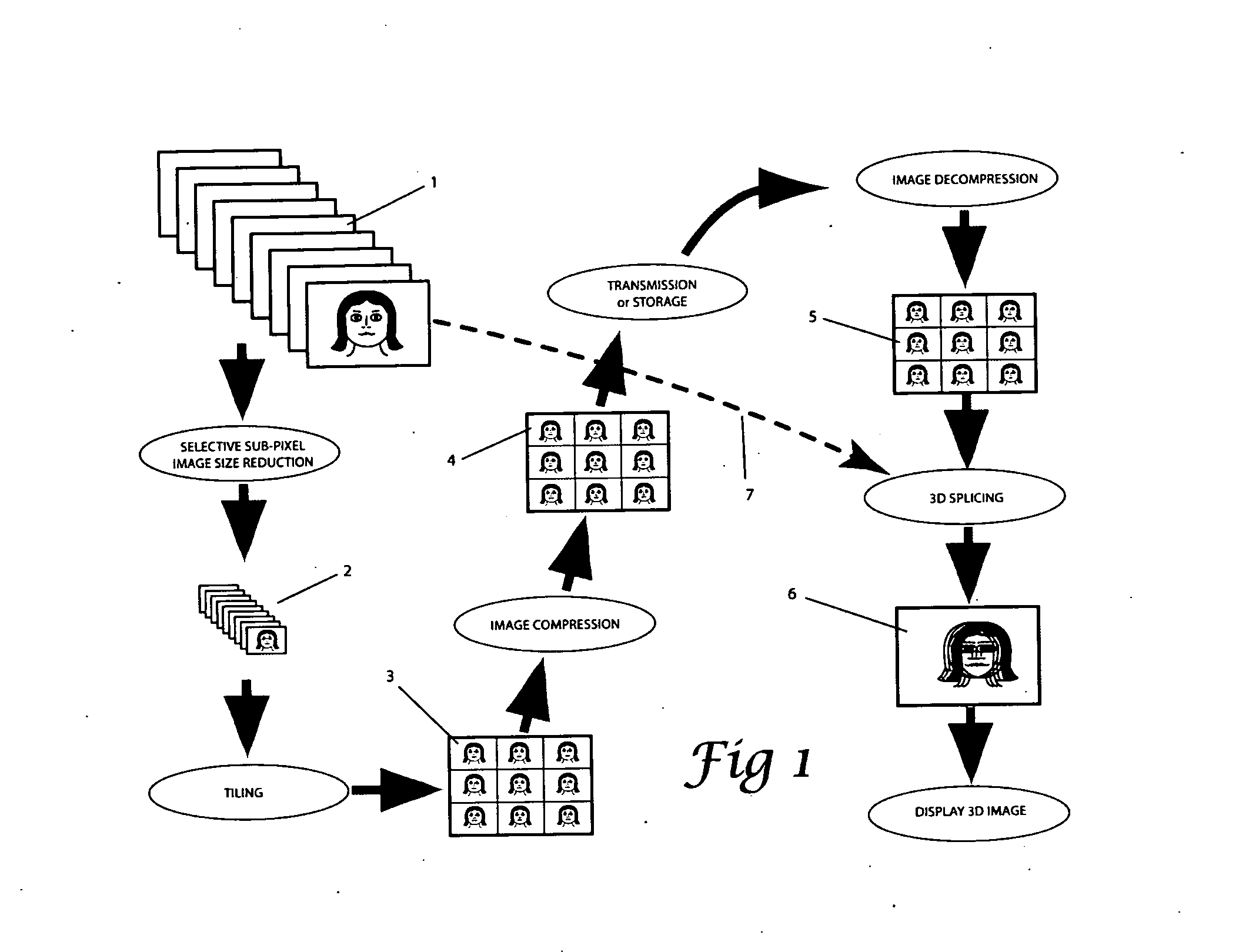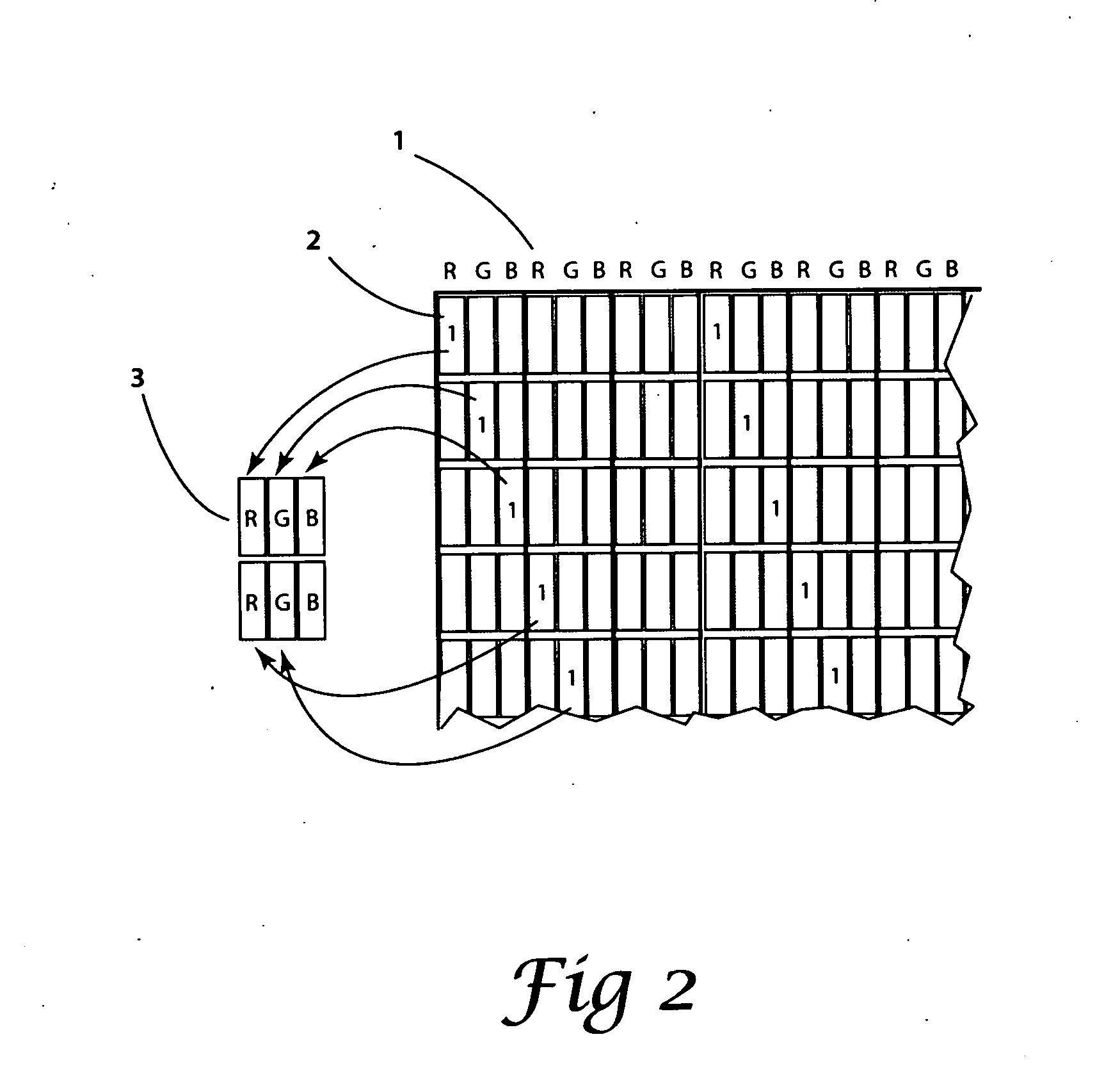Method of storing or transmitting auto-stereoscopic images
- Summary
- Abstract
- Description
- Claims
- Application Information
AI Technical Summary
Benefits of technology
Problems solved by technology
Method used
Image
Examples
Embodiment Construction
[0017]A common number of views for auto-stereoscopic viewing is nine or with high resolution screens, eighteen views may be considered. Each of the views can be generated either by photographic means or by 3D animation. In the following discussion a nine-view arrangement is applied to a display having a resolution of 1920×1080 pixels coupled to a lenticular lense having lenselets inclined to vertical at 18.3 degrees. FIG. 1 shows a schematic of how a set of sub-images is processed to yield a final 3D image. Referring to the figure, a set of individual views, 1, are generated at 1920×1080 resolution. These sub-images are reduced in size using a mapping technique the subject of this invention, which will be described later, to produce a reduced-size set, 2. This image reduction can be applied to each of the 9 views and the resultant images can be tiled to form a 1920×1080 image, 3, comprising the nine sub-images images. The adjacent pixels in the image, 3, belong to the same sub-image...
PUM
 Login to View More
Login to View More Abstract
Description
Claims
Application Information
 Login to View More
Login to View More - Generate Ideas
- Intellectual Property
- Life Sciences
- Materials
- Tech Scout
- Unparalleled Data Quality
- Higher Quality Content
- 60% Fewer Hallucinations
Browse by: Latest US Patents, China's latest patents, Technical Efficacy Thesaurus, Application Domain, Technology Topic, Popular Technical Reports.
© 2025 PatSnap. All rights reserved.Legal|Privacy policy|Modern Slavery Act Transparency Statement|Sitemap|About US| Contact US: help@patsnap.com



